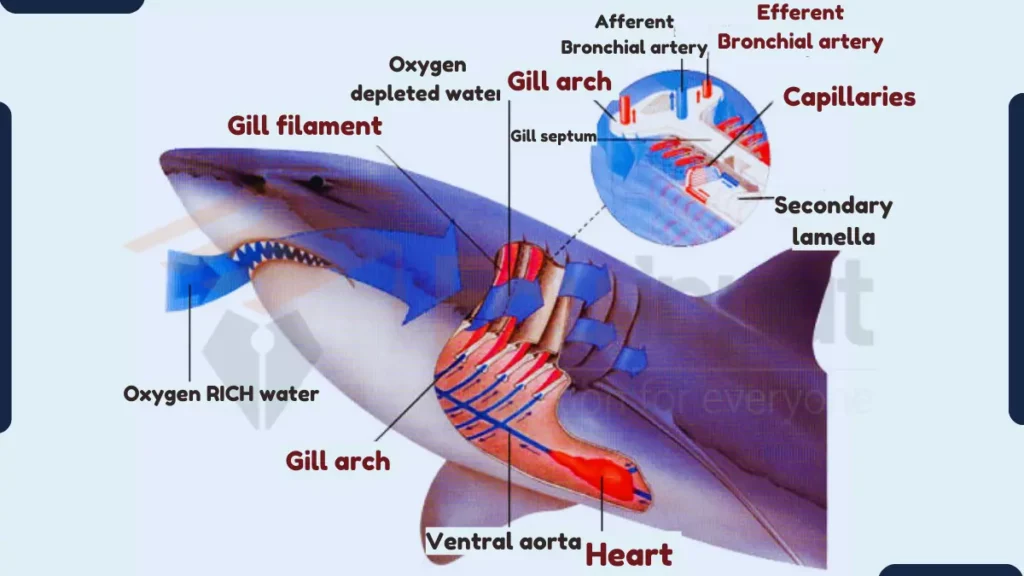Circulatory System of Shark- How does it Work?
Sharks have a single-circuit circulatory system, which means that their blood passes through the heart only once per circuit.

Structure of Circulatory System of Shark
The circulatory system in sharks is a single-circuit circulatory system, which means that blood passes through the heart only once per circuit. The heart is a two-chambered heart, consisting of an atrium and a ventricle.
1. Heart
The heart is a muscular organ that pumps blood throughout the body. It is located in the center of the chest and is enclosed in a sac called the pericardium. The heart is divided into four chambers: the right atrium, the right ventricle, the left atrium, and the left ventricle.
2. Blood Vessels
Blood vessels are tubes that carry blood throughout the body. There are three types of blood vessels: arteries, veins, and capillaries. Arteries carry blood away from the heart, while veins carry blood back to the heart. Capillaries are tiny blood vessels that connect arteries and veins.
Also read Examples of arteries and Examples of veins
3. Blood
Blood is a liquid that carries oxygen and nutrients to the body’s cells and removes waste products. Blood is made up of plasma, red blood cells, white blood cells, and platelets. Plasma is the liquid part of blood. Red blood cells contain hemoglobin, a protein that carries oxygen. White blood cells help to fight infection. Platelets help to clot blood.
4. Gills
Gills are organs that allow sharks to breathe. They are located on either side of the head. Gills contain many blood vessels that allow for the exchange of oxygen and carbon dioxide between the blood and the water.
5. Spiracles
Spiracles are small openings behind the eyes of sharks. They allow water to flow over the gills, which helps to increase the amount of oxygen that can be absorbed into the blood.
How does the circulatory system work in sharks?
The circulatory system in sharks works as follows:
- Deoxygenated blood from the body enters the atrium of the heart.
- The atrium pumps the blood into the ventricle.
- The ventricle pumps the blood out to the gills.
- At the gills, the blood is oxygenated.
- The oxygenated blood flows from the gills to the rest of the body.
- The oxygenated blood delivers oxygen to the tissues and removes waste products.
- The deoxygenated blood flows from the tissues back to the heart.
Counter-Current Heat Exchange System
The counter-current heat exchange system is a system of blood vessels that allows sharks to conserve heat. It works by transferring heat from the warmer blood in the veins to the cooler blood in the arteries. This helps to maintain the shark’s body temperature and allows it to swim more efficiently.
Also learn Difference between arteries and Veins



Leave a Reply